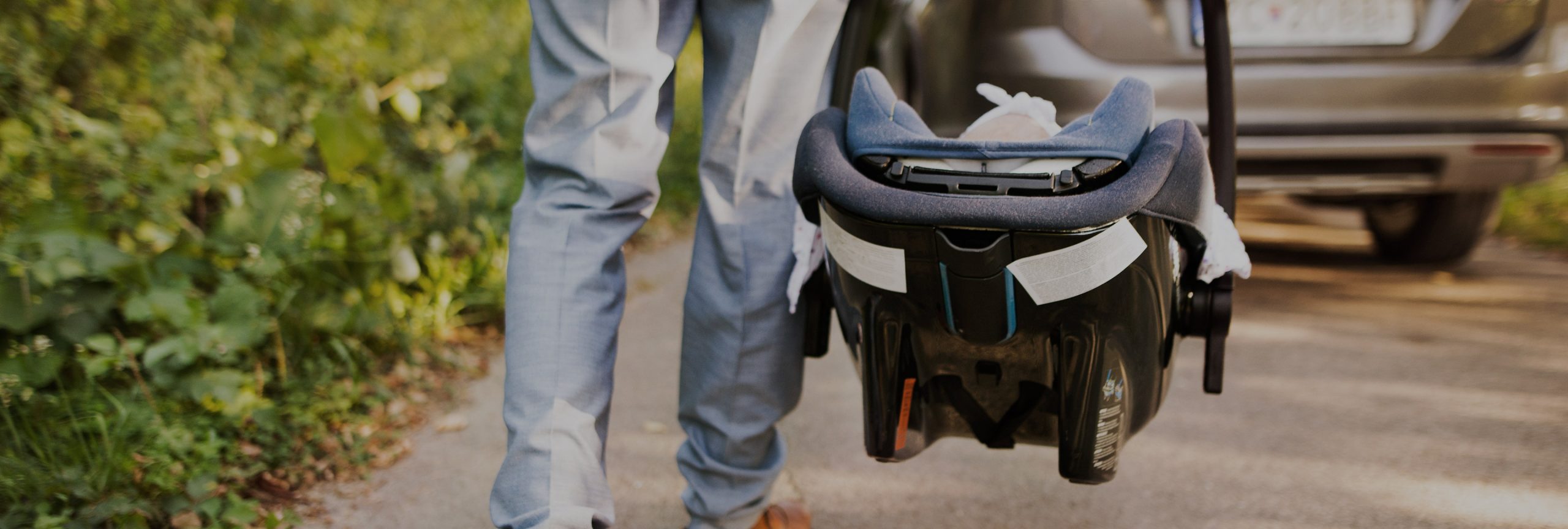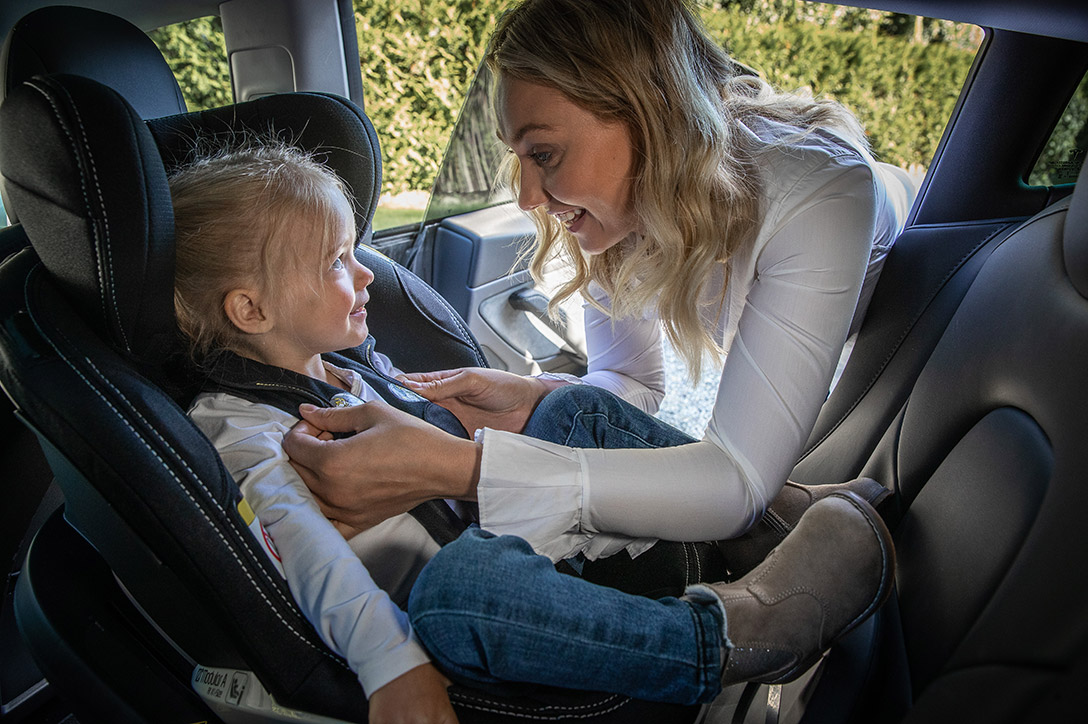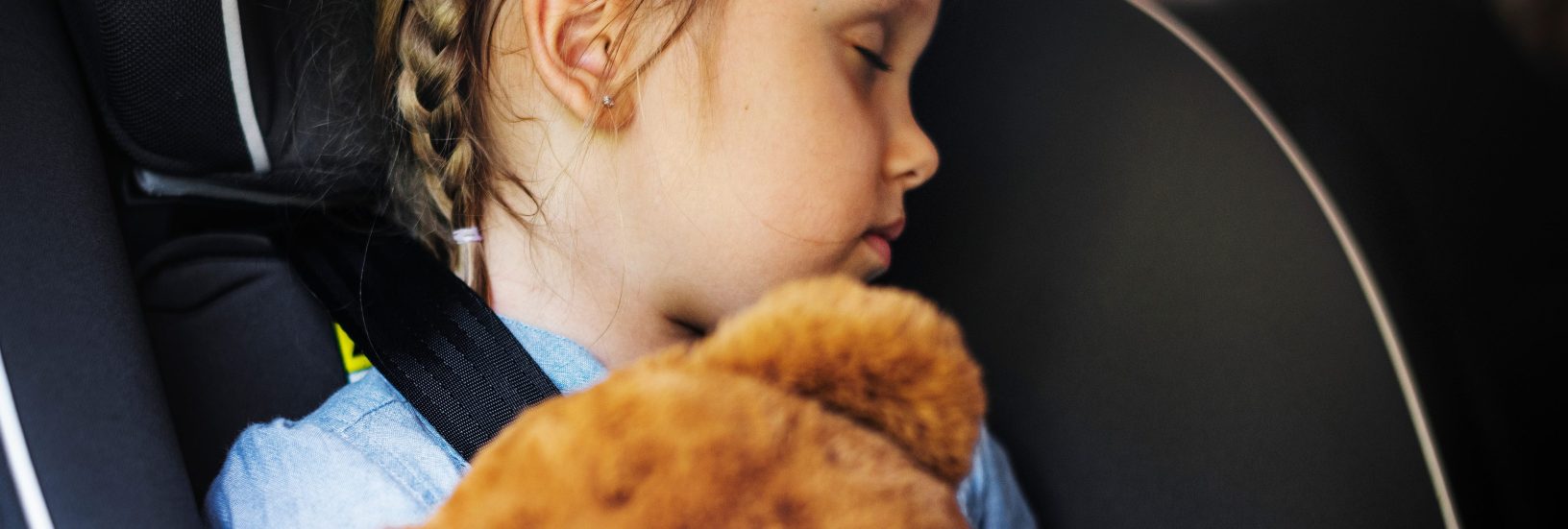Feb, 2022
When should I change my infant car seat to a toddler car seat?
Babies grow fast. In fact, by the time you’re done reading this article, your baby will have likely outgrown another onesie.
Babies’ rapid growth can make it difficult to know when you should switch from an infant car seat to a rear-facing toddler seat.
But, have no fear.
That is what we are here to help you with. (We are world leaders in child vehicle safety, after all.)
How long your child can use any given car seat depends on several factors, including which car seat model you have. This is why you should familiarize yourself with your child car seat as much as possible.
The number one rule with child car seats is always to check your owner’s manual. It has the answers you’re looking for.
In this article, we will give you some general advice for fitting children to car seats, but it is crucial that you read your owner’s manual to help you decide if your child has outgrown their infant seat and is ready for a toddler seat.
Introduction to car seats for children
There are three types of car seats for children:
- Infant seats.
- Toddler seats.
- Booster seats.
The types of seat are distinguished by the maximum weight and height of a child that can use the seat, and by the design and size of the harness straps.
Infant car seats
Infant car seats are designed to protect a baby from birth to about 1 year old, depending on the height and weight of the child. Many of these car seats have a handle that makes it easy for you to bring your little one in and out of the car.
Toddler car seats
Toddler car seats are designed to protect a child when they have grown out of their infant car seat. There are both rear-facing and forward-facing toddler car seats. We strongly recommend using a rear-facing toddler seat for as long as possible, or at least until the child is 4-5 years old, because it is much safer for them to sit rear-facing than forward-facing.
Booster seats
When a child can no longer use a rear-facing toddler seat, they start to use a booster seat.
In Europe, many booster seats are designed for a child up to 135 cm (4’5”) tall, but there are also booster seats that are approved for use up to 150 cm (4’11”) tall.
All countries have different rules for how long children have to use a booster seat. The purpose of a booster seat is to ensure that a child is correctly positioned in relation to the vehicle’s seat belt system and that a three-point belt is in the right position over the child’s body.

Safety standards for car seat models in Europe
There are two current standards for the approval of child safety equipment in Europe:
- UNECE R44
- UNECE R129.
The main difference between these two safety standards is that UNECE R44 uses a child’s weight as the criteria for which type of car seat you should use, while UNECE R129 primarily uses a child’s height.
UNECE R44 is now being phased out and will no longer be used to approve new child car seat models that enter the market. However, existing car seat models may still be approved according to it.
Always check which standard your car seat was approved by when examining weight and height limits.
When is it time to replace your infant car seat?
Some infant car seats are designed for babies up to 75 cm (2’6”) tall and others are for babies up to 85 cm (2’9”) tall. Some infant seats approved in accordance with UNECE R129 must be changed to a rear-facing toddler car seat when a child has reached a height of 87cm (2’10”), but there are also exceptions where a child should change the type of seat they use earlier than that.
Therefore, it is extremely important that you always read the user’s manual carefully so that you know what rules apply to your car seat. (Don’t throw it away and don’t skip reading it. That little booklet has vital information for you.)
Group 0 and 0+ infant car seats
If you have a Group 0 infant car seat, you must change it when your child weighs 10 kg (22 lbs).
Group 0+ infant car seats approved according to UNECE R44 must be changed to a rear-facing toddler seat when the child has reached a weight of 13 kg (28.7 lbs).
Always (and we cannot stress this enough) read the user’s manual that comes with your child car seat carefully so that you are familiar with the rules that apply to your specific seat.
Even if your infant car seat is approved in accordance with UNECE R44 – and therefore has a weight limit – your child may get too tall for the seat, resulting in an earlier change from an infant to a rear-facing toddler seat.
It is of the utmost importance that you always check the information provided by the manufacturer who made the infant car seat that you are using. You will find information about the criteria that applies to your infant seat in the user’s manual and on the approval label.
Note that a child can start using a rear-facing toddler seat at the earliest when the child can sit steadily on their own.
How do I know if my child has outgrown their infant seat?
The timing of the transition from an infant car seat to a rear-facing toddler seat depends on three things:
- What infant seat you are using.
- How tall your child is.
- How much they weigh.
In order to check if your child has outgrown their infant seat, you must first know what the car seat manufacturer says about how much a child’s maximum weight and height can be.
In addition to that, you need to know which standard (UNECE R44 or UNECE R129) was used to approve the infant seat. This information can be found in the user’s manual and on the seat’s approval label.
Above and beyond these guidelines, there is a rule of thumb you can use to decide if it’s time to make the switch from an infant seat to a rear-facing toddler seat; the distance between the top of your child’s head and the top of the headrest.
When your child uses an infant seat, the top of your child’s head should not protrude over the top of the headrest. There should be at least one finger width between the top of your child’s head and the upper edge of the headrest.
If there is less than one finger width of room between the top of your child’s head and the top of the headrest, it’s time to change to a rear-facing toddler seat.
Conclusion
To ensure your child is in the right seat for their size, monitor their height and weight, read your seat’s owner’s manual and know what standard was used to approve your infant car seat.
It’s important to make the switch from infant seat to rear-facing toddler seat at the right time to keep your child safe as they travel.
Read more: What are the rules for using a child car seat for children?
If you have any questions about Holmbergs or Holmbergs safety systems, please contact us. We are here to help.



